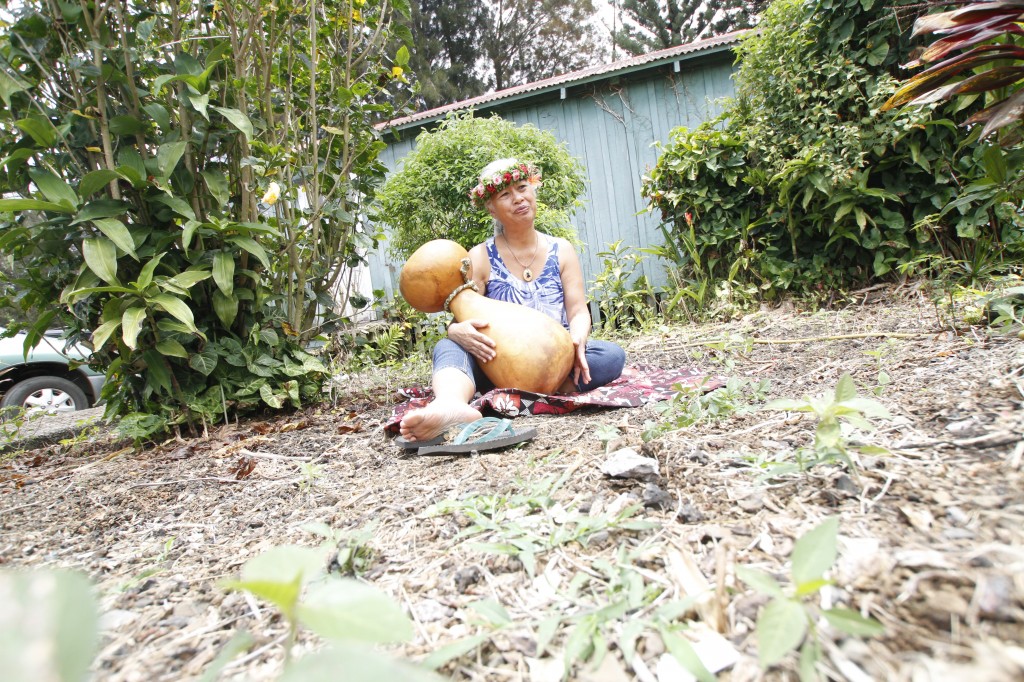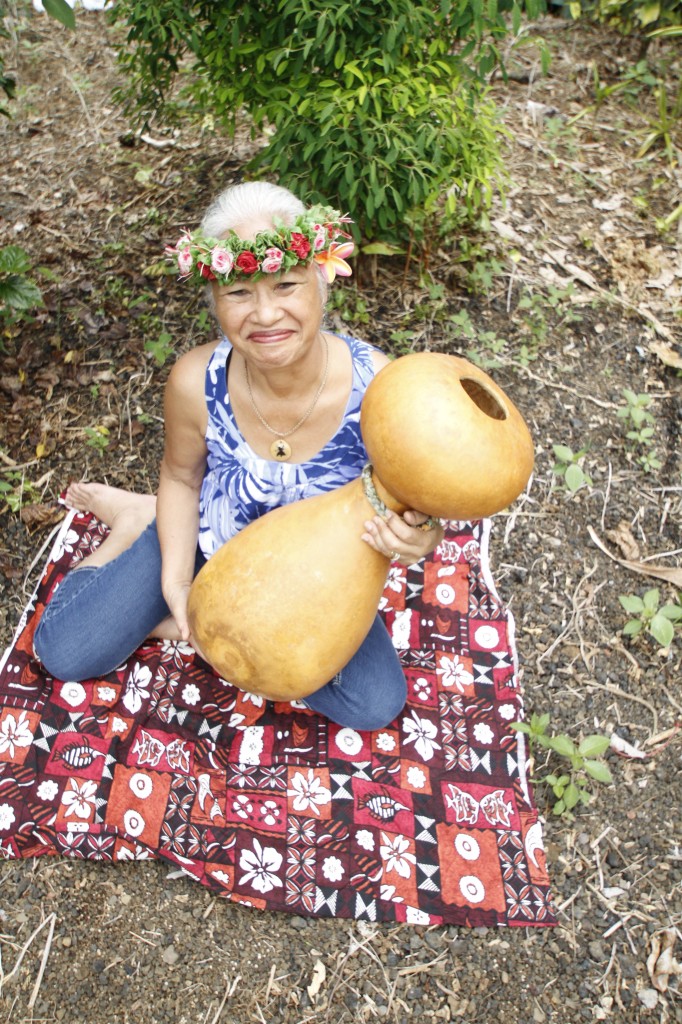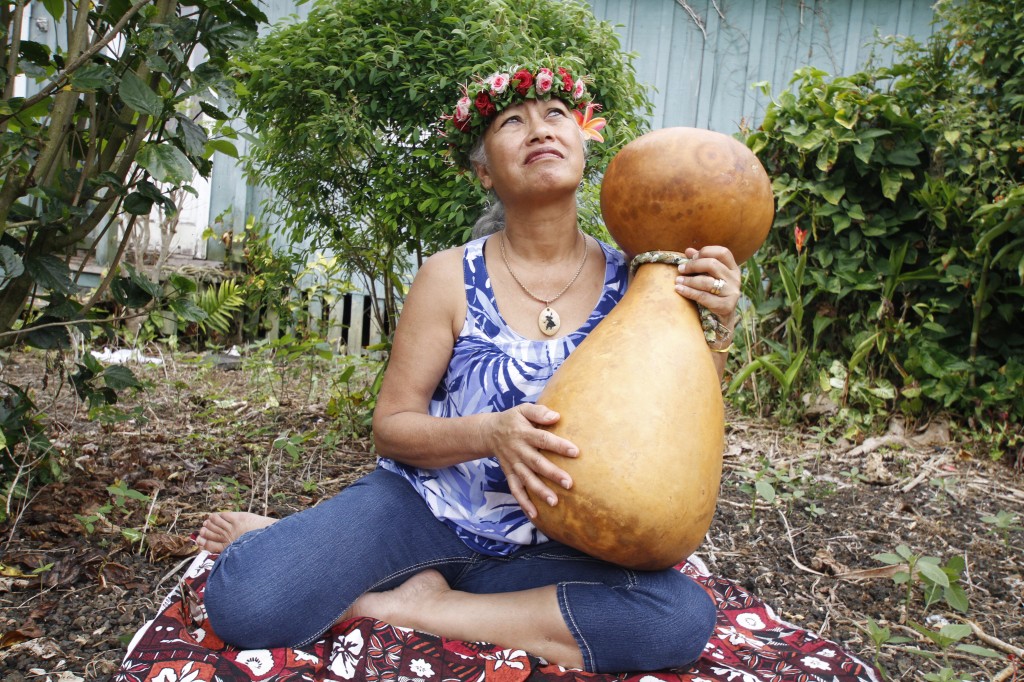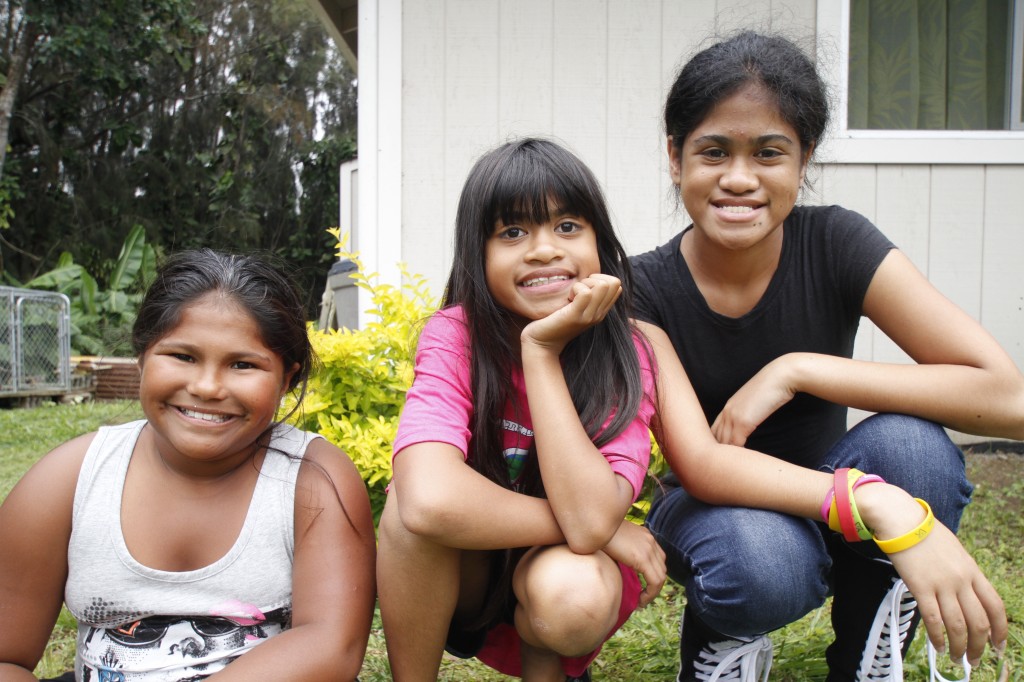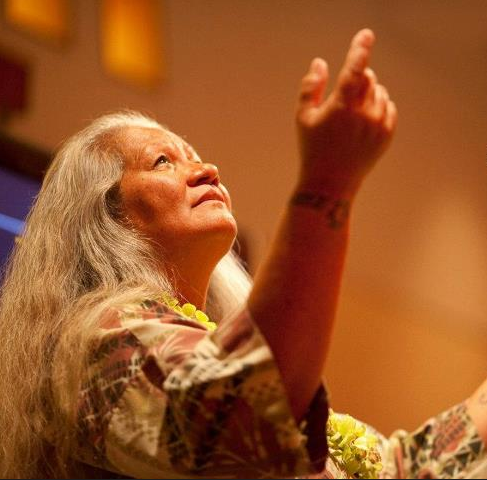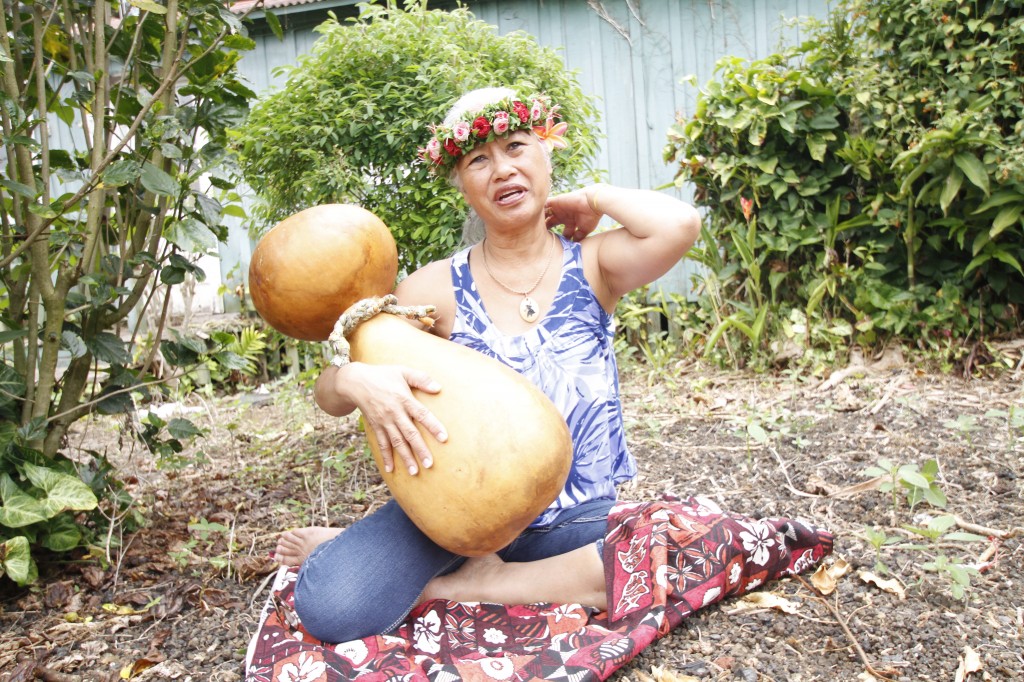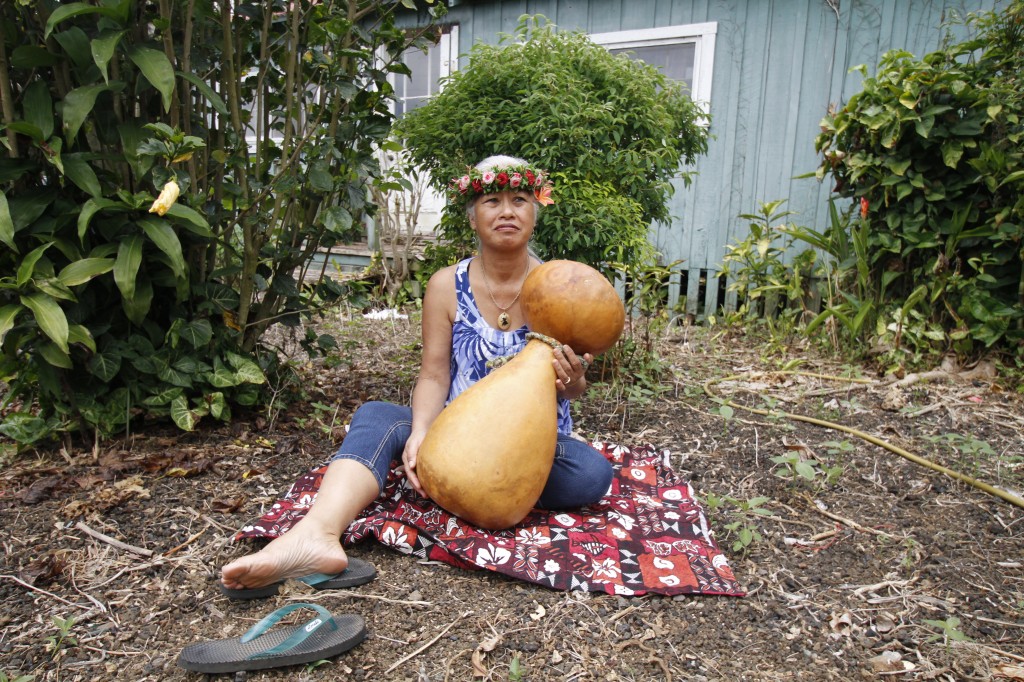 One of the most inspirational people I met when I went to Hawaii, the Big Island this past summer was Hope Keawe.
One of the most inspirational people I met when I went to Hawaii, the Big Island this past summer was Hope Keawe.
The night I met her, I was scheduled to do a restaurant review, courtesy of the restaurant and the Hawaii Tourism Board.
Being the “foodie” that I am, it’s rare for me to turn down a restaurant review even when I’m not hungry.
That particular day however, I had driven several hours in a convertible with the glorious Hawaiian sun beating down on me.
It’s fairly easy to navigate Hawaii’s roads by day, but no one filled me in on a little secret – the majority of the roads don’t have LIGHTS so finding your way to a new destination at night can be tricky.
My hosts did an incredible job mixing things up for my during my stay — from B&Bs and 5 star resorts to homey hotels.
In the north of the Big Island, there’s not many choices, but there is one very unique and special place called North Kohala’s Hawaii Island Retreat. I didn’t know what to expect to be honest, especially after driving down a dirt road without signs. It brought me back to Africa for a minute where you just used your radar to ‘feel’ where you should go.
Although it should have only taken me ten or so minutes on the dirty road to get to it off the main drag, it took me 30 or minutes to find after asking several locals since it was dark and I wasn’t familiar with the area. I was trying to imagine getting back to this place later that night after reviewing a restaurant that was an hour’s drive each way after driving seven hours that day already.
Feeling guilty about canceling my one hour drive to a restaurant…..known and already in the guide books, I asked my hosts, “where’s the best local place where I can hang out with locals?” “Bamboos,” she said and said she knew the owner. One phone call later and I had a reservation. And so, I arrived at Bamboo’s alone in the middle of a hula dance lesson that Hope (pictured above) was leading.
Hawaii’s BIG ISLAND is so great that if you don’t stop a thousands times pondering why, why and how (okay, a million), then you’re doing something wrong. And so, I decided to ask Hope a series of questions about her life in Hawaii.
She was a treasure to be around, so the questions seemed so mute in comparison with in-your-face time with Hope. When I first met her, she had just finished giving a hula lesson at Bamboo’s, a lesson which I joined for the duration I was there.
She sat down with me afterwards since I felt I must know her somehow….there was something about Hope’s energy that was so authentic, so pure, so ‘raw’ Hawaiian.
She told me about the island’s mourning of a woman named Raylene Lancaster who had recently passed in March 2012 (I was there in late June).
Raylene represented everything Hawaiian. Says North Hawaiian News, “she radiated pure, unconditional love for everyone. Her long, striking, reddish brown hair that later turned to silver-gray, often created a halo affect around her.
Indeed, her mana was so strong, she seemed always connected to her source. Wherever she went, people gravitated towards her, were drawn to her like a magnet, and those in her presence experienced her genuine caring and concern.”
Sadly, I never had an opportunity to meet her but Raylene was a legend and incredibly respected among those –– like Hope – who treasured her work.
Raylene became a master of story telling (moolelo) and had established her own halau hula in the early 1970s in California.
When she moved to Kohala in the early nineties, she began teaching Hawaiian culture in the public schools and established a halau hula in North Kohala.
She would often talk story about the old Hawaiians, their legends and their stories through chants, and made a recording of “Ku`u Ipo I Ka He`e Pu`e One” for the CD Mele Hula, Hawaiian Melody.
In Kohala, she began teaching elementary students as a cultural specialist within that district. In the mid 1990s, her first community class was entitled “Your Name as a Prayer”, where she encouraged participants to look at where they came from, who they were, and why they were here.
Raylene was also a practitioner of Hooponopono, the ancient Hawaiian art of reaching agreement and ‘making right.’
She shared the process of this Hawaiian spiritual healing practice in workshops and classes throughout the community. In 2007, Raylene was chosen as one of 10 native Hawaiians invited to a private audience with the Dalai Lama in Maui.
I learned from Hope that the community was still discussing how to pass on Raylene”s ‘work’ — true Hawaiian hula. At only 61, Raylene passed away March 9 in a one-car accident on Kohala Mountain Road, the same dark road I had driven the night before.
Says Hope, “we need to keep ancient hula alive,” noting that very few people knew of its ancient traditions and were able to pass it on.
This led to our discussion and Hope’s active participation in keeping hula alive at her house two days later after meeting her at Bamboo’s Restaurant the night I arrived.
BTW, there wasn’t anything not to love about Hope.
My only wish is that we had more time to connect.
All of the photos were taken at her home, which is on a rural side road that leads out of the main town’s center, which basically consisted of a small street with a few restaurants, shops and a petrol station.
Renee: How long have you lived on Hawaii, the Big Island? Are you native to the Big Island and if so, your family are from where and for how long?
Hope: I am a native of this land, having lived here in Hawaii for 58 years. My parents were also born on the big island of Hawaii and have lived here all their lives. (OKAY, it doesn’t get much more Hawaiian that that I was thinking)
Renee: What got you into Hula and the culture of Hula as it pertains to the state of Hawaii?
Hope: When Raylene moved to North Kohala, I heard she was starting a hula class. She had a young group at the time and she started having more students of different ages. Her style was much different than any other kumu’s that I’ve come across and so I felt that I needed to take her class. Note: she considered Raylene to be her hulu guru and studied under her for many years)
Renee: What do you love about the Hawaiian hula tradition?
Hope: I love to watch the students that have that look of commitment and determination to learn the art of hula. To them it is a gift to learn hula. I can see that they love hula and want it so much that every minute of learning and dancing hula is so appreciated.
Renee: What’s your interest in moving hula forward and what are your plans to keep it alive in the community and beyond?
Hope: Hula is preserving the stories of our ancestors. Keeping it alive will be done by it’s teachers and with Raylene gone, I hope to continue the teachings of her work and share that knowledge with others. Hula is alive in North Kohala but not as understood as it should be. My plans are to teach, remember her teachings and to extend her knowledge to others. I want to teach students and others who want to carry on this legacy and let her live in ‘our hula’ and in ‘our halau.’ That is my main goal.”
How incredible is that? If felt lucky and honored to have met her and to be invited to her home on a late afternoon, where her ever so cute (okay, very very cute) grandkids were running around.
Whenever we spoke, it seemed to revolve around the legendary Raylene, whose mission was keeping Hawaiian heritage alive.
Says a family member on the Living the Aloha Spirit blog: “a most self-less and beautiful individual full of ‘aloha’ for all. If you met her for the first time, Aunty always made you feel like you knew her forever….full of compassion and joy for others and always with a smile on her face. I will always remember her ‘smile’. I used to look in the mirror and tell myself, ” put a smile on your face like Aunty Raylene and give ‘aloha’ to everyone you meet! Among Aunty’s many attributes, she also was a master in Ho’oponopono, the process of ‘making things right.”
The more I learned about this woman, the more I wanted to hang with her and yet, I was 3 months too late given that she was about to give birth. OR, was I? This woman had energy and it didn’t wane regardless of how many days she worked and how long her commute was. Perhaps the lesson of the week was about endurance and faith.
Renee: What is unique about the way you teach and is it a particular style of hula?
Hope: Right now we dance what we were taught by our Kumu. Nothing has changed however I am working on keeping it simple, just the way Kumu did. I believe that teaching the basics of hula, which are essentially steps and hand movements, is critical. They are the foundation of hula.”
She then elaborates and expands as she tells me the story of how she made the hula drum pictured in the above shots.
Hope: Moku O Keawe is a festival that is held every year and many people come to teach. Kalim, who is a Kumu that teaches students how to make ipus and ipu heke. I did both. It is made with dried gourds. It was hard work. It had to be scrubbed on the outside by sand and when that was done, we had to cut the tops and cleaned the inside.
Taking all the seeds and scraping the sides of the gourd took some effort. Putting together was very tricky. The top and bottom gourd had to be a perfect match. Then it was glued together and dried. This took almost the whole day. I really enjoyed making this ipu heke ole. Now I need to play it and let it sing!”
Hear hear Hope.
It turns out that she’s also married to renowned Hawaiian singer songwriter John Keawe, a slack-key guitarist who was born on the Big Island of Hawaii, in the little town of Hawi in North Kohala. He was playing at Bamboos the night I met her. I loved his soothing voice and later took in some of his earlier compositions “Ka`auhuhu Homestead” and “Big Island Magic” which were chosen for album cuts on projects that involved various artists.
Together, between his music and her dancing and teaching, they are committed to Hawaiian traditions and customs. They both love to entertain and engage audiences in the allure of all things Hawaiian.
The hula dramatizes or portrays the words of the oli or mele in a visual dance form. There are many sub-styles of hula, with the main two categories being Hula ‘Auana and Hula Kahiko. Ancient hula, as performed before Western encounters with Hawaiʻi, is called kahiko. It is accompanied by chant and traditional instruments. Hula, as it evolved under Western influence in the 19th and 20th centuries, is called ʻauana (a word that means “to wander” or “drift”). It is accompanied by song and Western-influenced instruments like the guitar, the ʻukulele, and the double bass.
What I loved most about Hope’s spirit was her genuine passion and dedication to keep an ancient tradition like Hawaii hula alive and to pass it on to others who will continue the tradition. She is an inspiration and a joy to be with….I treasure the short lived time I had with her and one day, hope we can extend it beyond a morning at her home or coffee and dessert at a local restaurant.
It’s not as if I’m going to take weekly Hula classes in San Francisco; it’s not likely or possible given my travel and work schedule, yet I kept thinking, if I lived in Hawaii, I might just do that and if I did, I couldn’t imagine a better teacher and spirit than Hope to learn from.
Here is a video of John and Hope Keawe lead audience members in the singing of “Hawaii Aloha” at the conclusion of their concert at the East Hawaii Cultural Center, Hilo Hawaii a few years ago. John and Hope performed as part of the Hawaiian Music Series at the EHCC, which promotes special performing artists on a monthly basis, providing the community the opportunity to experience authentic Hawaiian Music and performances by contemporary legends.
For more on Hawaii, go here. All photos taken by Renee Blodgett, except for the shot of Raylene which was pulled from the living the aloha spirit blog.

Renee Blodgett is the founder of We Blog the World. The site combines the magic of an online culture and travel magazine with a global blog network and has contributors from every continent in the world. Having lived in 10 countries and explored nearly 80, she is an avid traveler, and a lover, observer and participant in cultural diversity.
She is also the CEO and founder of Magic Sauce Media, a new media services consultancy focused on viral marketing, social media, branding, events and PR. For over 20 years, she has helped companies from 12 countries get traction in the market. Known for her global and organic approach to product and corporate launches, Renee practices what she pitches and as an active user of social media, she helps clients navigate digital waters from around the world. Renee has been blogging for over 16 years and regularly writes on her personal blog Down the Avenue, Huffington Post, BlogHer, We Blog the World and other sites. She was ranked #12 Social Media Influencer by Forbes Magazine and is listed as a new media influencer and game changer on various sites and books on the new media revolution. In 2013, she was listed as the 6th most influential woman in social media by Forbes Magazine on a Top 20 List.
Her passion for art, storytelling and photography led to the launch of Magic Sauce Photography, which is a visual extension of her writing, the result of which has led to producing six photo books: Galapagos Islands, London, South Africa, Rome, Urbanization and Ecuador.
Renee is also the co-founder of Traveling Geeks, an initiative that brings entrepreneurs, thought leaders, bloggers, creators, curators and influencers to other countries to share and learn from peers, governments, corporations, and the general public in order to educate, share, evaluate, and promote innovative technologies.

